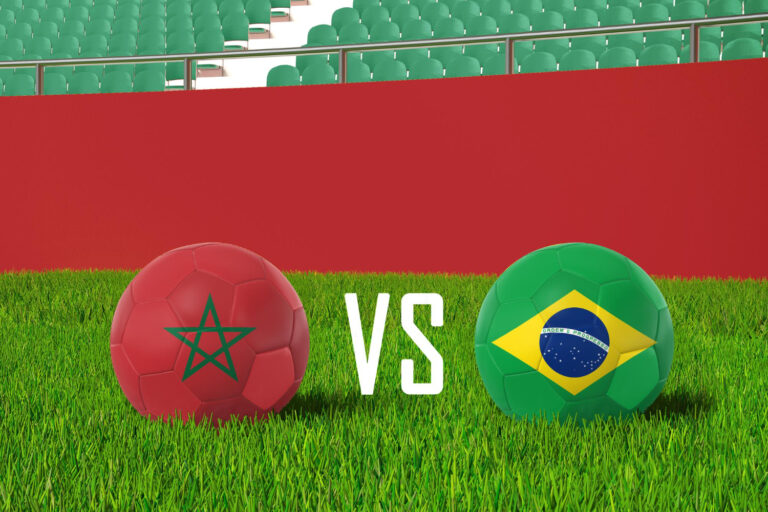Why South America Still Breathes Football
Walk through any street in Montevideo, drift past any beach in Rio, or find yourself in a village in Argentina, and you’ll sense it. The rhythm of life in South America is not just marked by its culture or music, it’s animated by football. The game is not a pastime here. It is a deep inhale, a loud cheer, a collective heartbeat.
South America still breathes football because the game has never been a luxury here, it’s survival, identity, and joy stitched into the continent’s daily life. This isn’t romanticism; it’s what I’ve seen, heard, and felt from stories, matches, players, and fans alike. The football culture in South America transcends leagues and borders. It’s local and global at once. It’s messy, raw, and poetic. It’s also generational.
Let me take you deeper into why this relationship between a continent and a game still feels more like blood than ink.
Street Football as the Real Academy
In South America, the first coach is the street. Many of the continent’s most celebrated players didn’t grow up with synthetic pitches or structured academies. They learned the game barefoot on concrete, with makeshift goals and a ball that had long lost its shape. Those games weren’t about drills, they were about intuition, trickery, and freedom.
That kind of learning fosters creativity. It’s why when you watch a Brazilian or Argentine player weave through defenders, you’re witnessing improvisation born in alleys, not manuals. There’s a freedom to the way South Americans play, less rigid, more expressive. Coaches often say South American players play “with their hearts,” but it’s more than that. They’ve had to learn to adapt, to use flair as a weapon, and resilience as their foundation.
The Club Culture Runs Deep
European football often grabs headlines, but South American clubs are religions. Boca Juniors vs. River Plate isn’t just a derby; it’s a full-on clash of social identities. Flamengo games can draw more fans than most European derbies. The rivalries aren’t just sporting, they’re cultural, political, sometimes even generational.
Clubs like Santos, Peñarol, Nacional, and Independiente have produced legends who’ve defined eras. And yet, their fans support them through crumbling stadiums, financial chaos, or relegation. The loyalty isn’t conditional. It’s woven into family roots. You’re born into a club here, and you live it.
South American clubs are also scouting factories. They identify talent early, develop it quickly, and export it even quicker. It’s a bittersweet cycle, watching your best players leave, but fans take pride in producing stars the world will know. That developmental pressure sharpens the entire ecosystem.
Football Is Tied to Social Mobility
In many South American countries, football offers one of the most realistic ways to change your life. If you grow up in a favela in Brazil or a rural village in Colombia, your chances of escaping poverty are slim. But if you can kick a ball well enough, doors open.
That dynamic makes players hungrier, more determined. Watch a 16-year-old phenom from Ecuador training like his life depends on it, because it often does. The stakes are high because the reward is more than glory; it’s economic freedom.
That sense of urgency is missing in countries where football is a job, not a ticket out. South American kids grow up idolizing players who’ve made it. Neymar isn’t just a footballer, he’s proof that it can happen to someone who comes from where they come from. Football, in this sense, isn’t just passion, it’s possibility.
The Players Keep the Flame Alive
Legends from South America are not rare, they’re routine. Think Pelé, Maradona, Ronaldo, Messi. Think of Ronaldinho’s smile or the anger in Tevez’s game. Even today, players like Vinícius Júnior, Julián Álvarez, Enzo Fernández, and Moisés Caicedo are lighting up Europe while carrying the flag of their homelands.
These players don’t just succeed, they retain the spirit of the continent. They bring samba, tango, and cumbia to pitches from Madrid to Manchester. The flair, the unpredictability, the street-smart decision-making, it’s all part of a footballing culture that hasn’t dulled with time.
You can’t clone that culture. Coaches from around the world try to teach “flair” or “creativity,” but you can’t drill what comes naturally to kids who grew up expressing themselves through football. That’s the secret sauce South America still exports better than anyone else.
The National Teams Unite the Continent
When Argentina won the 2022 World Cup, it wasn’t just about Messi. It was about an entire continent feeling vindicated. For decades, South American fans had watched their stars leave for Europe, win titles, and then fail to bring those victories home. That win was personal, it reminded the world that South America still breathes football, still breeds champions.
Whether it’s Brazil chasing its sixth star or Uruguay leaning on its fierce tradition, national teams here mean more than just sport. They reflect the spirit of the people, fiery, defiant, hopeful. The pressure is immense, but so is the pride. During international tournaments, even people with no access to stadiums huddle around radios or TVs, wearing jerseys that might be older than them.
The Copa América isn’t just a tournament, it’s war with poetry. The intensity, the noise, the wildness of it all, it’s what makes South American international football different. It’s tribal, but it’s also beautiful.
The Style Still Captivates
Watch a South American game, and even if it’s not technically pristine, it will be full of character. Slide tackles that spark fights. Dribbles that make crowds roar. Goalkeepers who play like midfielders. It’s chaotic, but never dull.
There’s also an appreciation for drama. A chipped penalty in stoppage time. A celebration with a backflip. Fans painting their faces, lighting flares, and crying through both goals and misses. Every match feels like theatre.
Even with tactical evolutions and fitness demands, South American football hasn’t lost its identity. It has modernized without losing its soul. That’s a rare thing in today’s data-driven football landscape.
Football Is Still the Common Language
South America speaks multiple languages, Spanish, Portuguese, indigenous tongues, but football is the language everyone understands. It breaks down class, race, and geography. It connects a fisherman in Peru to a banker in Santiago. It bridges generations.
Kids here still name their dogs Pelé or Messi. You still see murals of Diego in Naples and Buenos Aires alike. Football is on TV, on the radio, on graffiti walls. It’s in the lullabies and the bar fights. It never takes a day off.
Unlike in other continents, where football competes with dozens of entertainment options, here it still dominates. The Sunday league games matter. The third-tier battles still draw crowds. And every family has stories of that cousin who could’ve gone pro.
Even the Flaws Add to the Story
South American football isn’t perfect. Far from it. Corruption scandals, mismanaged federations, broken contracts, these are all too common. But somehow, it all adds to the mystique. The chaos doesn’t kill the game, it defines it.
Where else would you find a player going on strike because the club hasn’t paid wages but still showing up to score the winner in a derby? Or a 38-year-old captain crying after avoiding relegation for a club that barely survives month to month?
It’s not sanitized here. It’s real. And that realness keeps it grounded, even when the players soar.
Conclusion
Why South America still breathes football comes down to more than trophies, stars, or history. It’s about how football is sewn into the soul of the continent. It’s about the kids juggling balls in the street. The fans camping outside stadiums. The legends carrying their flags abroad. The clubs that still nurture raw talent. The national teams that unite countries torn by politics or poverty.
Football is not a chapter in South America’s story, it’s the spine. And no matter how the global game evolves, that passion, that obsession, that breath, it isn’t going anywhere.







